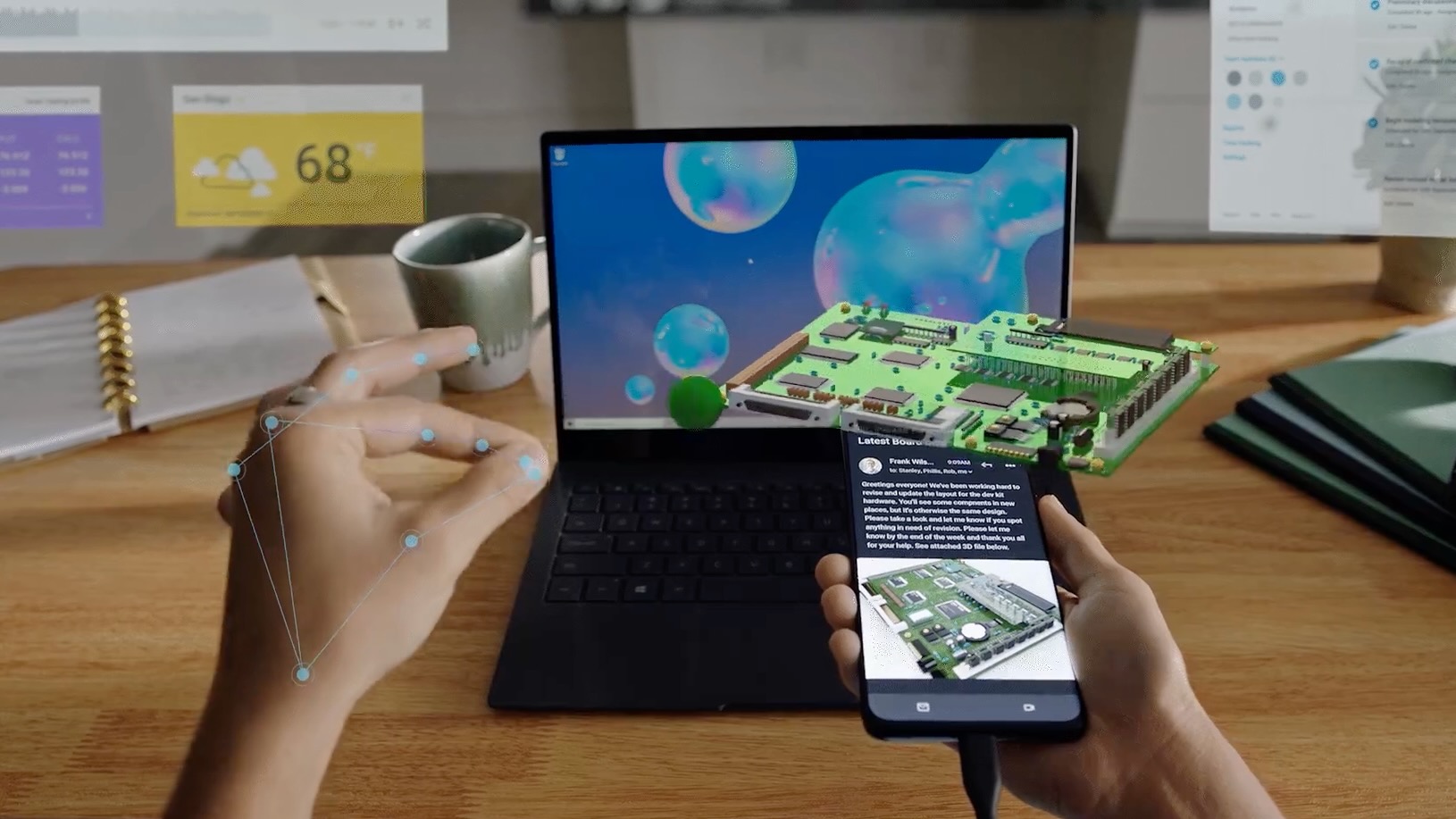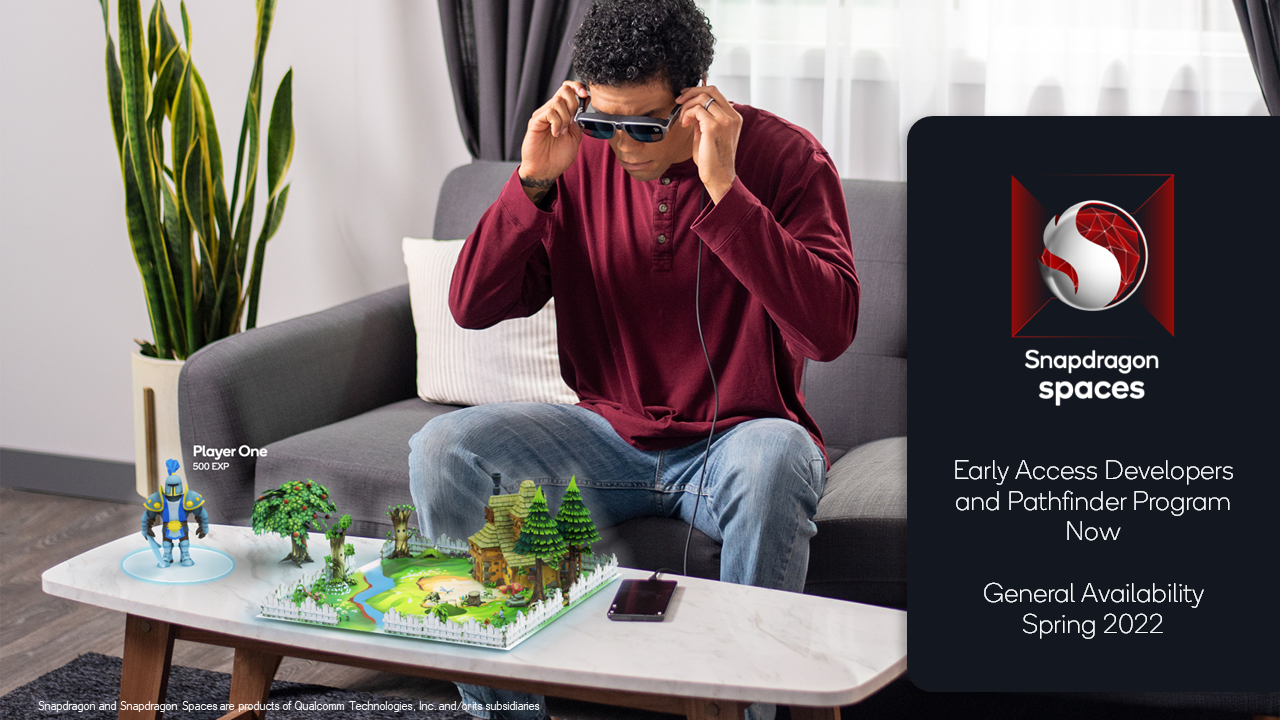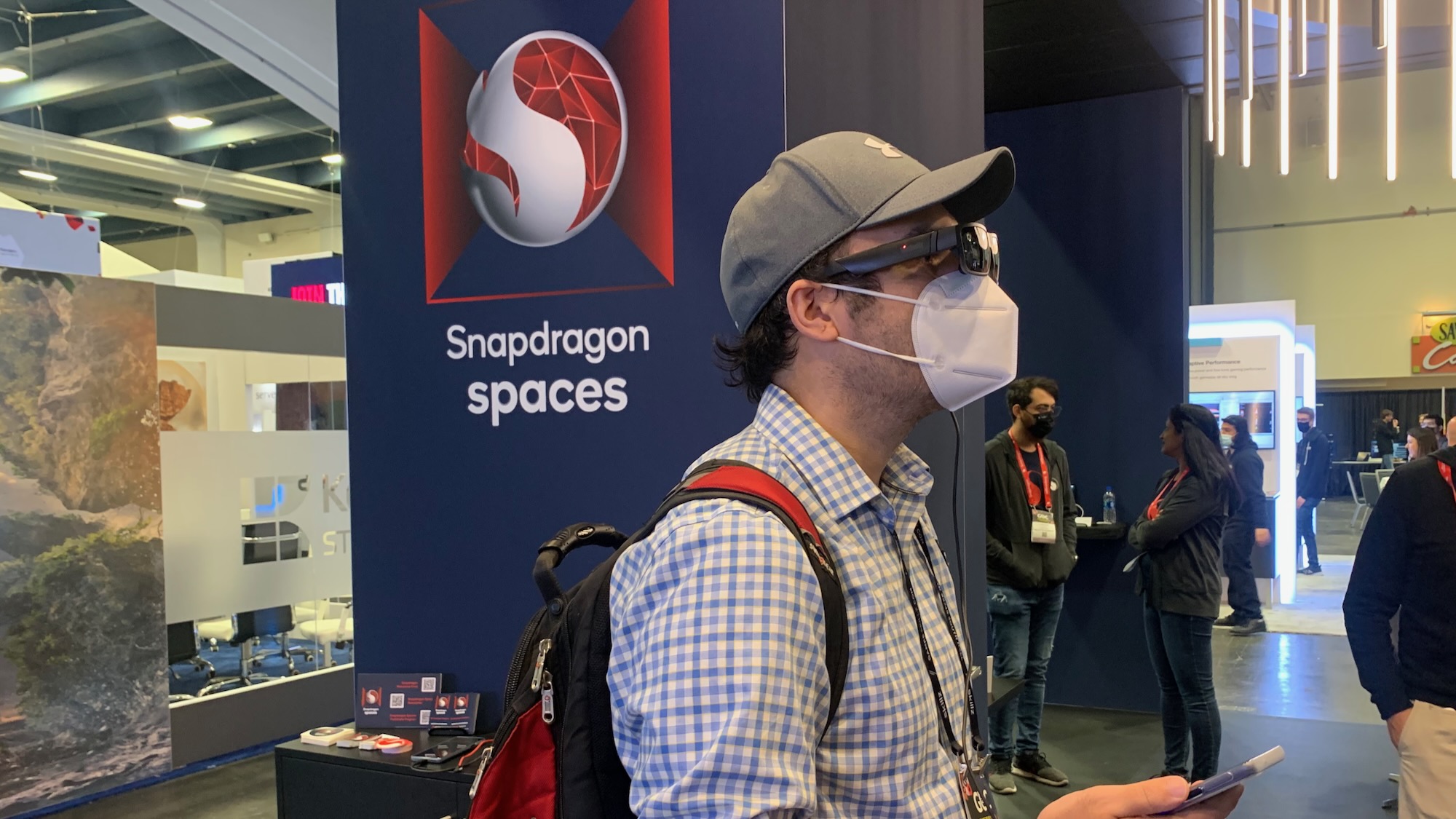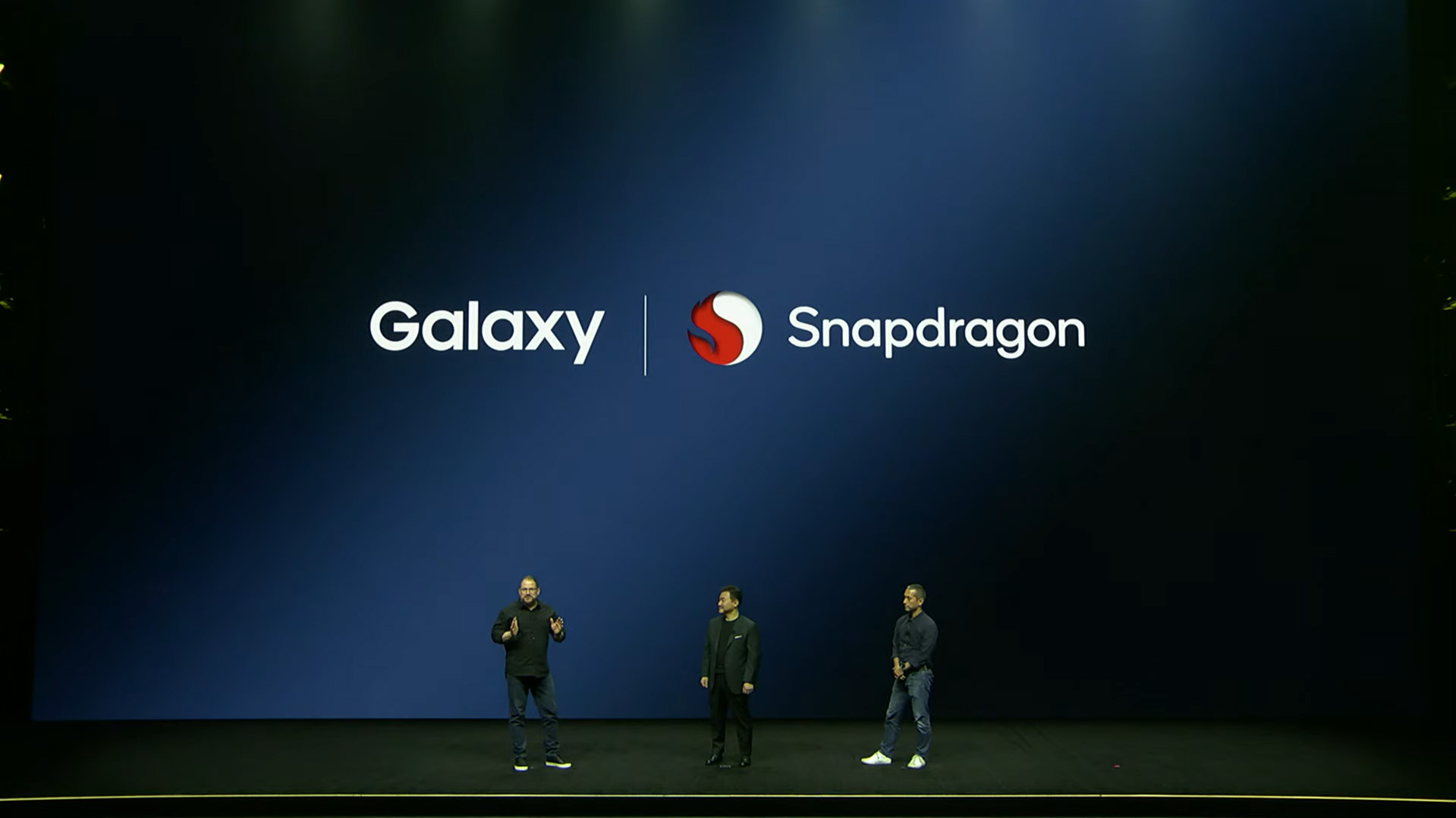What is Qualcomm Snapdragon Spaces?
A lot of popular tech brands want to break into augmented reality. Snapdragon Spaces is how they'll do it.

What is Qualcomm Snapdragon Spaces?
Best answer: Snapdragon Spaces is an open mixed-reality (XR) platform designed to make augmented reality software that runs off of Qualcomm mobile hardware. It offers basic AR tools that make it easy for companies to start creating apps without having to develop the tools themselves. Spaces launched in early 2022 and has major early partners like Epic Games, Lenovo, and T-Mobile. Samsung and Google may also use the platform, though this isn't confirmed.
Snapdragon Spaces explained

According to Qualcomm, Snapdragon Spaces XR Developer Platform "enable[s] the creation of immersive experiences" that "blur the lines between our physical and digital realities" and are "optimized for performance and low power consumption."
In non-marketing speak, the platform lets you create 3D apps built for AR glasses like the Lenovo ThinkReality A3, which connect to and are powered by smartphones. Your app can either be AR-native or tie specifically to a standard Android app, but they're designed to run off of mobile hardware rather than anything more powerful or expensive.
Qualcomm created baseline AR features like 6DoF positional tracking, anchored windows with remembered positioning, image or object recognition of whatever the user is looking at, plane detection so holograms can interact with flat surfaces or walls, occlusion tech that makes holograms disappear if they go "behind" a physical object, hand tracking, and many other features.
By using Snapdragon Spaces, developers can use these tools natively, knowing that the software will be upgraded over time to stay compatible with new Snapdragon hardware. That way, it's less likely an AR app will become obsolete and lose its relevance.
Unfortunately, it works specifically with Snapdragon hardware, which means these AR applications wouldn't work with MediaTek chips (or Apple phones, obviously). But Spaces specifically works with the OpenXR standard, which would theoretically allow for interoperability with other augmented reality platforms.
Because both Unity and Unreal Engine will tie into Snapdragon Spaces, that means devs will be able to create 3D assets within well-known game engines that then port easily into augmented reality.
Which companies are using Snapdragon Spaces?

Lenovo partnered with Qualcomm to make its ThinkReality A3 enterprise smart glasses the "first to commercialize Snapdragon Spaces." But many other companies have also announced plans to use the platform, listed below:
Get the latest news from Android Central, your trusted companion in the world of Android
- Epic Games
- Unity
- OPPO
- Lenovo
- Motorola
- Xiaomi
- T-Mobile
- Niantic
- NZXR
- The Jim Henson Company
Other early-access AR developers include Felix & Paul Studios, holo|one, Overlay, Scope AR, TRIPP, Tiny Rebel Games, NZXR, forwARdgame, Resolution Games, and Trigger Global.
Most of the top-selling Android brands have partnered with Qualcomm for this program. And T-Mobile's partnership proves that AR devs will rely heavily on 5G to power some experiences, in order to ensure AR glasses can become more compact while still powering life-like experiences.
Qualcomm has also created an $100 million Metaverse Fund for developers creating VR/AR content, as part of the Snapdragon Spaces Pathfinder Program. Individuals or companies can apply to receive "platform technology, project funding, co-marketing and promotion, and hardware development kits they need to succeed," and will fully own their project once it is completed.
This will likely encourage startups to begin adopting Snapdragon Spaces for AR demos, which will mean the AR glasses that use Qualcomm chips will benefit from a wider selection of applications.
What about Samsung and Google?

During the February Galaxy Unpacked event revealing the new Samsung Galaxy S23 series, Qualcomm CEO Cristiano Amon came on stage with Samsung president of mobile TM Roh and Google SVP Hiroshi Lockheimer to reaffirm the partnership between the three brands as they collectively focus their efforts on virtual and augmented reality. Roh later told the Washington Post that this new headset was "not too far away."
We don't know whether Samsung will develop a mixed-reality headset using the Snapdragon XR2, augmented reality glasses with the Snapdragon AR2, or VR/XR glasses using an unannounced chip like the XR2 Gen 2 rumored to appear in the Meta Quest 3. Whatever the case, it's quite possible that Samsung will use Qualcomm's Android-focused Snapdragon Spaces tools to develop its own software, given their close partnership.
The same could also apply to Google's rumored AR live-translation glasses or mixed-reality prototype Project Iris. But neither Google nor Samsung is officially affiliated with Snapdragon Spaces, so it's possible either brand could rely on their own software instead.
Is Snapdragon Spaces the future of AR?
Brands like Epic Games that benefit from open ecosystems have every reason to support Qualcomm over other major AR brands for creating a multiverse. In the Spaces announcement, Unity VP Timoni West is quoted saying that "the metaverse simply can’t exist as a walled garden," while Epic Games VP Marc Petit mentioned the "open metaverse" mantra. This topic of an open metaverse was explored by our very own Nicholas Sutrich, who wrote in his editorial that "metaverses that encourage open interoperability will end up reigning supreme in the end."
Of course, if other brands have their way, a walled metaverse is exactly what will happen. Meta, for instance, plans to release several new AR glasses through Project Nazare over the next ten years, with the hopes of creating its own capital-M Metaverse. And Apple, of course, will soon release its own AR/VR headset (if the leaks are true) that will stick to its own OS and App Store.
So other brands will use Snapdragon Spaces to create tech and apps that they couldn't hope to develop on their own. The question is whether or not this open-source system will lead to a popular consumer AR product before Apple or Meta captures the market for themselves, and these brands are forced to switch from open-source Android software to a controlled system.
For now, Snapdragon Spaces allows brands to create accessible AR apps without major overhead, but unfortunately only very expensive AR devices can run them. So it may be a long time before the XR project pays off for the average consumer.
But when it does, these apps should be compatible with all of the best Android phones. For example, at GDC 2022, Qualcomm showed off a convincing AR demo using a Lenovo ThinkReality A3 and Moto Edge+. So it's clear that once the AR hardware becomes more affordable, your smartphone will be able to power it.

Michael is Android Central's resident expert on wearables and fitness. Before joining Android Central, he freelanced for years at Techradar, Wareable, Windows Central, and Digital Trends. Channeling his love of running, he established himself as an expert on fitness watches, testing and reviewing models from Garmin, Fitbit, Samsung, Apple, COROS, Polar, Amazfit, Suunto, and more.
